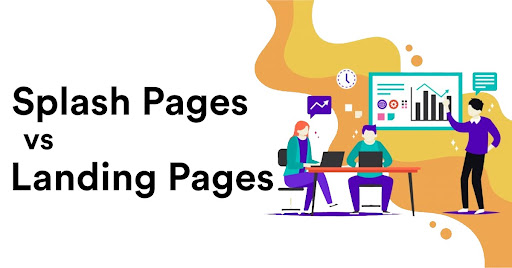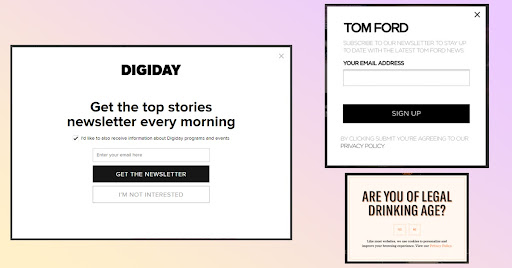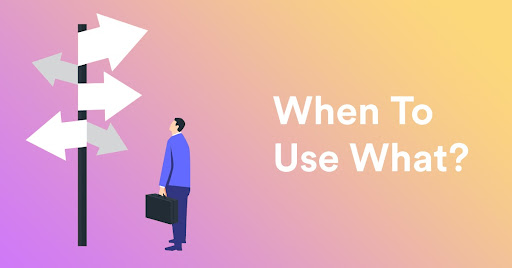
Affiliate marketing is always implementing the newest developments in the industry. If you are in the industry, you are probably going to use a vast array of new methods and strategies to improve your campaigns. Staying constantly in the loop can be hard and sometimes even the best affiliates need to do some catching up.
This is where today’s topic comes from. All of us know about landing pages, but recently more and more people mention splash pages as well. Some consider it to be a synonym and use the terms interchangeably, but this is not correct. There are differences and today, we are going to tell you what those differences are and when to use these two pages in your campaigns!
What Are Landing Pages?
Landing pages are standalone pages that display some additional information that you want to show to your visitor. These pages are finely crafted to increase conversion rates and help sway the visitor to buy something from you, sign up for something, download something, etc. Landing pages are a big part of the marketing industry. They are present on almost every big campaign that you might think of and they are invaluable to the success of those campaigns. This is backed up by the incredible fact that says that companies using 40 or more landing pages generate on average 120% more leads!
The way landing pages accomplish this is by being designed to catch users’ attention. They usually have a lot of eye-catching headlines, creatives, and intriguing copy that users just can’t get enough of. They show prospects what you offer and slowly warm them up so that they are more likely to convert. They are also used frequently in traffic and lead generation. LPs are very versatile and are used all the time on the web!
Creating landing pages is usually a bigger task than it is with splash pages. Landers have a lot of thought and care put into them so that they accomplish the desired goal. Luckily tools like WordPress and other online page creators can make these pages fairly quickly. You can download templates and use them for your pages.
What Are Splash Pages?

Splash pages are pages that come before any other page on your website. They are the first thing someone sees upon entering your page. They can be part of the main page, but they can be completely independent pages (though this is very rare). Not every website has them, but it is easy to notice those who do.
The purpose of these splash pages can vary depending on the context it is used in. Sometimes they act as additional information pages that can provide the visitor with additional details on something. Most of the time these pages are used to show users warnings, updates, disclaimers, or brand new offers that the advertiser wants to promote. But in most cases, they are used for far simpler teasers, age disclaimers, and coming soon pages.
Usually, these pages contain just a sentence or two of copy, with the use (or without) of a simple creative. Splash pages also on average have some redirect button that gets the users redirected to the main site.
The biggest problem with these splash pages is how they are made. Most of the time, developers make them using JavaScript, which most search engines don’t like that much. Because of this, your pages might rank lower and you might get less traffic while using them. Other times, the pages themselves are disliked by users and they decide to leave on their own accord. Of course, these two problems don’t happen every time. If you know what you are doing and you spend sufficient time optimizing the pages, you shouldn’t see negative aspects to it.
Creating splash pages is simple and doesn’t require that much coding knowledge. You can use some of the many online tools to create the right splash page for your needs. With the proper ones, you might have a page in mere minutes!
What Are The Biggest Differences Between Them?
Landing Pages:
General Things:
- They can be short or long pages
- Mostly in the form of standalone pages
- They are specifically created to promote your products or services
- They contain a lot of details
Pros:
- They are optimized for conversions
- They are proven to increase conversion rates
- They are great at informing audiences
- They are great at warming up your audience
Cons:
- They can be hard to do properly
- They can take some experience to create
- They take some time to create and implement
Splash Pages:
General Things:
- They are screens that op up when the user first enters a site
- They are mostly very short pages
- Mostly in the form of pop-ups or non-standalone pages
- They are created to inform, notify, advertise, or direct users
- They often use CTAs to drive action
- They are used to collect information
- They only contain preliminary messages
Pros:
- They load extremely fast
- They are great for showing off specific detail
- They can be used to help users decide on small things
- They can be used to receive feedback from users
- They are simple and fast to make
Cons:
- They can be annoying if implemented poorly
- Search engines usually don’t like them
- They can be repetitive
When Should We Use Each Type?

While some people mix these two up, their roles and usage are those who are quite different. Landers are tried and tested pages that have the main goal of driving conversions. They are optimized through their copy, creatives, and CTAs to drive sales. They are usually in a longer format and are used for pushing your product or service.
On the other hand, splash pages are much more simple. They are usually small pages that have only a few key details inside of them. While they can push products, they can also have other roles. To get a feel for what splash pages are used for, here are some examples:
- Newsletter Signup Prompt
- Download Prompt for eBooks or Other Things
- Age Verification
- Selecting languages and regions
Final Words
Landing pages and splash pages can all be effective tools in your marketing efforts. These unique pages can help turn your regular campaigns into highly profitable ones. Using them properly can enable you to increase your conversion and engagement rates.
Landing pages are proven and often used in affiliate marketing and their effect on campaigns is widely known. They are highly effective at what they do and it’s no wonder that pretty much every marketing effort utilizes landing pages in one way or another. But they are not the only tool in your toolset.
Splash pages are growing in popularity and their proper usage can similarly help your campaigns. They can help your audience get familiarized with your offers and help them convert. They are much simpler to implement and create compared to landers, and they can be an incredible marketing tool that you can use to stay a few steps ahead of your competition!
Please log in to Facebook to access the comments section